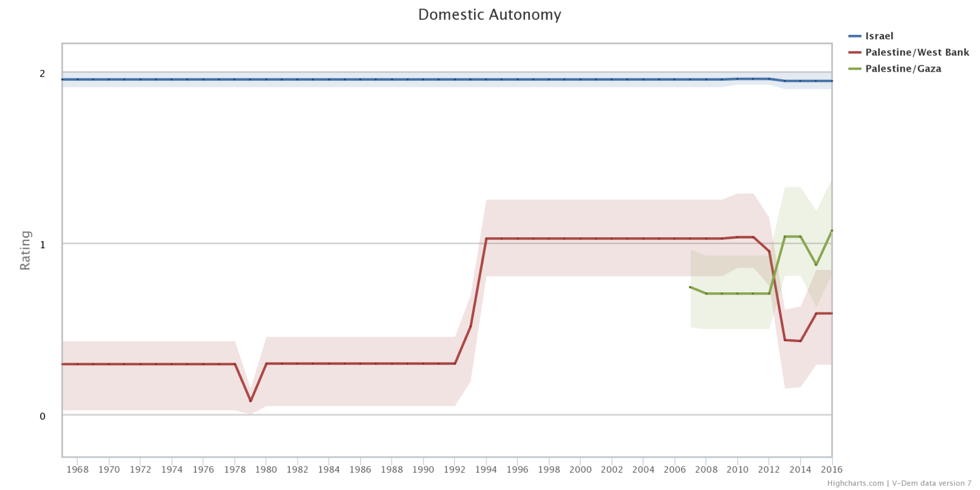Palestine and Domestic Autonomy
By: V-Dem Staff
Jan 24, 2018
On December 6, 2017, US President Trump formally recognized Jerusalem as the capital of Israel. Since the country had annexed the eastern part of the city in 1980, the question of control over its holy sites has been a crucial issue in the Israeli-Palestinian Conflict. Hence, Arab countries and even Western allies protested against this decision that could trigger a new wave of violence in the Middle East.
This week’s graph sheds some light on the competing territorial claims which have arisen since the Six-Day-War in 1967. V-Dem’s domestic autonomy indicator captures the degree to which a country’s conduct of domestic policy is free from control of other states. In ascending order, the corresponding three point scale signifies a non-autonomous, semi-autonomous and autonomous status.
The graph shows that on the contrary to Israel, Palestine’s autonomy has been severely restricted throughout the whole time period. Despite of United Nations’ plans to establish two states in the former British Palestine Mandate Area, in 1948 Egypt and Jordan annexed the West Bank and Gaza. In the Six-Day-War of 1967 Israel occupied both areas and established military administrations, leaving almost no sovereignty to the locals. It was not before 1992 that Israel partially withdrew forces and granted the Palestinian National Authority some self-government capacity. However, when in 2007 the radical militant Hamas group seized the Gaza Strip, violence re-intensified, leading Israel to take retaliation measures which effectively undercut Palestinian sovereignty again.
If you want to learn more about the trajectories of the Israeli-Palestinian Conflict, use our online analysis tools at v-dem.net.


